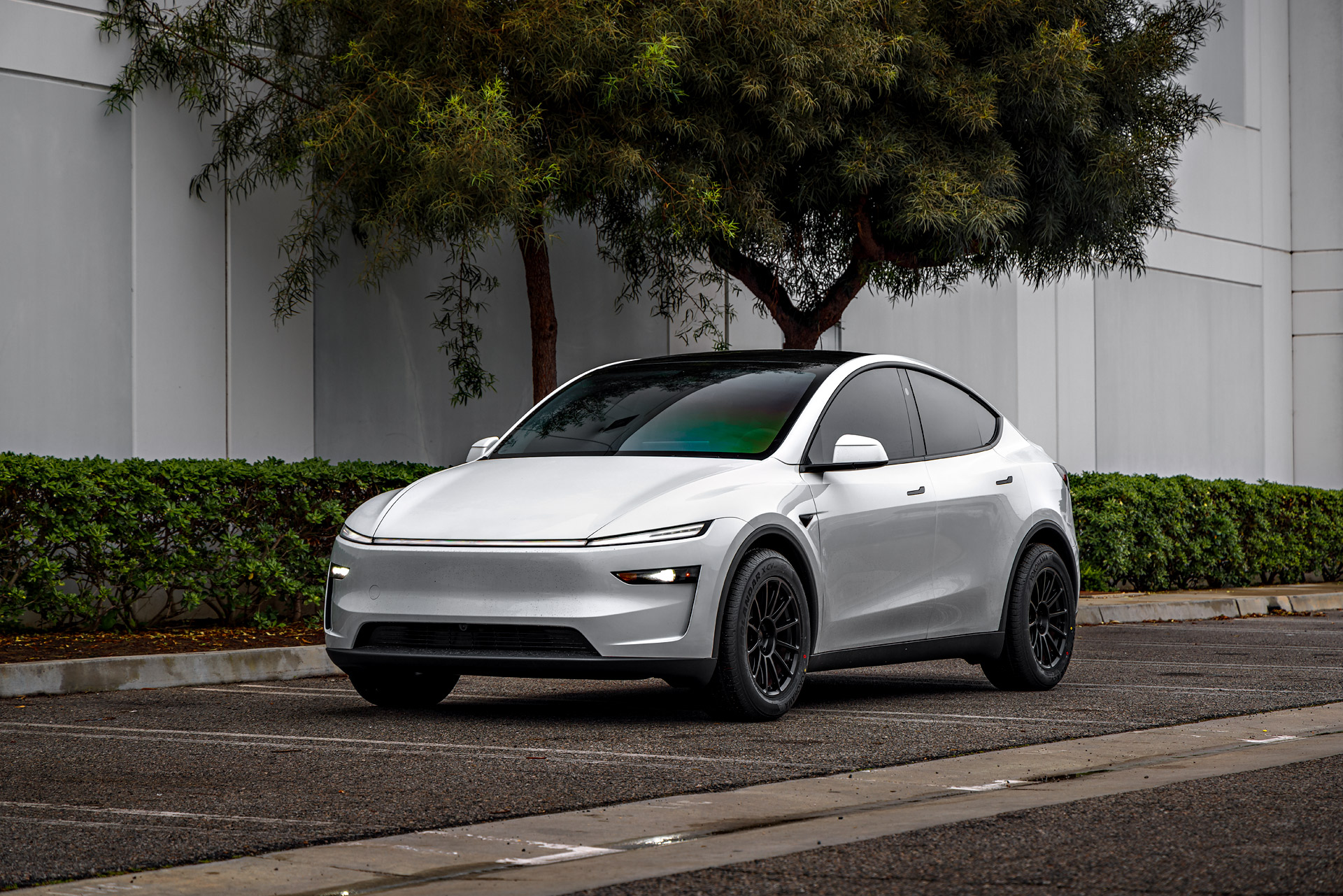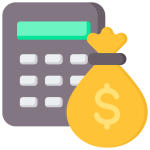
The Tesla Model Y has quickly become one of Australia’s most popular electric vehicles, celebrated for its practicality, space, and tech-forward design. While the public Supercharger network is a key part of the Tesla experience, the vast majority of charging happens right at home, overnight.
For a new Model Y owner, choosing the right home charger can seem daunting. Do you buy the official Tesla Wall Connector, or are third-party options better? This comprehensive guide will break down everything you need to know about charging your Tesla Model Y at home, from the technical specs to a detailed comparison of the best chargers on the Australian market.
Understanding the Tesla Model Y’s Charging Capabilities
Before you can choose a charger, it’s essential to know what your Tesla Model Y can handle. All Model Y vehicles sold in Australia are equipped with a Type 2 AC charging port.1
- AC Charging Speed: The Tesla Model Y’s onboard AC charger can accept up to 11 kW of power.2 This is the absolute maximum speed for home charging. To achieve this speed, you must have a three-phase power connection at your home and a compatible 11 kW wall charger.
- Single-Phase Charging: The vast majority of Australian homes are equipped with a single-phase power supply. On a single-phase connection, your Model Y will charge at a maximum of 7.2 kW.3 Don’t worry, this is still an excellent speed—a full charge overnight (7-11 hours) is easily achievable.
- The Mobile Connector: Every Tesla Model Y comes with a Mobile Connector (sometimes sold as an optional extra), which allows you to plug into a standard 10A power point.4 This is a Level 1 charging method and is extremely slow. It’s great for emergencies or when staying with friends, but it’s not a practical long-term solution, adding only about 10-15 km of range per hour.
Key Takeaway: For home charging, your goal should be a Level 2 AC wall charger. Your choice of a 7.2 kW (single-phase) or 11 kW (three-phase) charger will depend entirely on your home’s electrical setup.
The Contenders: A Detailed Look at the Best Chargers
When it comes to home charging, you essentially have two categories of products: the official Tesla Wall Connector and a wide range of third-party smart chargers.
1. The Tesla Wall Connector (Gen 3)
This is the most popular choice for a simple reason: it’s a seamless part of the Tesla ecosystem.
- Design & Simplicity: The Wall Connector features a minimalist, sleek design that perfectly matches your Model Y. It comes with a long 7.3-metre tethered cable, which is longer than most competitors and provides excellent reach.5
- Performance: It’s a powerhouse, delivering up to 11 kW on a three-phase connection or 7.2 kW on a single-phase connection. Its “Power Sharing” feature is excellent for households with multiple EVs, as it can intelligently distribute a single electrical circuit’s power to multiple chargers.
- Integration: The Wall Connector integrates directly with the Tesla app, allowing you to monitor and schedule charging from your phone.6 You can also view charging sessions and history directly within your Tesla’s in-car screen, which is a big convenience.
- The Downside (for some): The primary drawback is its “dumb” nature when it comes to solar. The Wall Connector can only use excess solar energy to charge your car if you also have a Tesla Powerwall.7 It lacks the advanced, built-in solar-matching features of many third-party smart chargers that work with any solar inverter.8 It also doesn’t have an LCD screen for real-time data display.
- Price: The Wall Connector is very competitively priced, making it one of the most affordable high-quality chargers on the market.
2. Third-Party Smart Chargers
This is where the real competition is. These chargers are often packed with more advanced features and are compatible with all EVs with a Type 2 plug (including your Tesla).9
- Solar Integration: This is the key selling point for many third-party chargers in Australia. Chargers from brands like Zappi or Wallbox can communicate directly with your home’s solar system and automatically charge your Model Y using only your excess solar energy. This means you’re using free, green power and can save a significant amount on your electricity bills.
- Smart Features & Connectivity: Most third-party chargers come with an app that offers a full suite of features:
- Scheduled Charging: Schedule your charging sessions for off-peak hours to take advantage of lower electricity rates.
- Dynamic Load Balancing: This is a crucial safety feature. It monitors your home’s total electricity consumption and will automatically reduce the charge rate to your car to prevent you from tripping a circuit breaker.10
- Remote Monitoring: See your charging session history, power usage, and costs in a detailed dashboard.
- Compatibility: While the Tesla Wall Connector is compatible with other EVs (via a simple unlock function), a universal third-party charger is often a better choice if you plan on having a non-Tesla EV in the future.
- Australian-Made Options: Brands like EV Power and ChargeMate offer chargers designed and manufactured in Australia, with local support and warranty.11
The Big Comparison: Tesla vs. Third-Party
| Feature | Tesla Wall Connector (Gen 3) | Third-Party Smart Chargers |
| Aesthetics & Design | Sleek, minimalist, integrates with the Tesla look. | Varies widely by brand, from compact to feature-heavy. |
| Connectivity | Best: Seamlessly integrates with the Tesla app and your car’s screen. | Excellent: App-based control with a wealth of features. |
| Solar Integration | Limited: Only with a Tesla Powerwall. | Excellent: Many models can use excess solar power from any system. |
| Load Balancing | Yes: “Power Sharing” for multiple chargers. | Yes: Most models offer dynamic load balancing for single-car setups. |
| Cable Length | Very generous 7.3m tethered cable. | Varies, typically 5m or 6m. Untethered models available. |
| Price | Very competitive, one of the most affordable options. | Varies, but smart chargers can be more expensive. |
| Warranty | 4-year warranty. | Varies, typically 2-5 years. |
| Verdict | Best for simplicity and seamless Tesla integration. | Best for advanced features, solar optimisation, and future-proofing for non-Tesla EVs. |
What to Consider Before You Buy
Choosing the right charger is about more than just a brand name. Here are the key factors for a Model Y owner in Australia:
- Your Home’s Power Supply: This is the most important factor. If you have single-phase power, a 7.2 kW charger is all you need and all your home can handle. Don’t pay extra for a 22 kW charger if you can’t use the extra power. If you have a three-phase connection, you have the choice of a 7.2 kW or 11 kW charger. The 11 kW will charge faster and is a great option, especially for a large-battery vehicle like the Model Y.
- Solar Power Integration: Do you have a rooftop solar system? Are you planning to get one? If your answer is yes, then a smart charger with solar integration is an absolute must. The savings on your electricity bill will pay for the charger over time.
- Future-Proofing: Do you plan on owning another EV that isn’t a Tesla? If so, a universal smart charger might be a better choice. While the Tesla Wall Connector works with all Type 2 cars, a non-Tesla owner would have to download the Tesla app for charging control and may miss out on features tailored to their vehicle.
- Installation Costs: Remember that the charger unit is only part of the cost. Professional installation is mandatory in Australia and can range from $500 to over $2,000, depending on the complexity of the job.
The Final Recommendation:
For the vast majority of Australian Tesla Model Y owners, a 7.2 kW smart charger is the perfect solution. It’s fast enough to provide a full charge overnight, and the smart features allow you to optimise charging with off-peak tariffs or solar power. It gives you the best of both worlds: fast, convenient charging and significant long-term savings.
However, if you’re a die-hard Tesla fan who wants the most seamless, integrated experience possible and don’t care about advanced solar features (or you already have a Powerwall), the Tesla Wall Connector is an outstanding and cost-effective choice.
FAQs
Q: What charging speed will I get at home with a Model Y?
A: On single‑phase power you’ll typically get up to 7.2 kW. On three‑phase supply the maximum is 11 kW with a compatible charger.
Q: Is the Tesla Mobile Connector good enough for daily use?
A: No – it’s practical only for emergencies or occasional use. It charges at around 10-15 km of range per hour, which is very slow for daily driving needs.
Q: Do I need a smart charger if I don’t have solar?
A: Smart chargers offer scheduling, dynamic load management and remote monitoring, which are useful even without solar. If you want to use off‑peak tariffs and track usage, a smart charger is worthwhile.
Q: Can I charge my non‑Tesla EV with the Tesla Wall Connector?
A: Yes. The Wall Connector uses a Type 2 outlet and can be unlocked to work with other Type 2 vehicles, though a universal third‑party charger may be more feature‑rich for non‑Tesla cars.
Q: How much does professional installation cost in Australia?
A: Typical installation ranges from about $500 to more than $2,000 depending on complexity, switchboard upgrades and whether three‑phase wiring is needed.
Q: Will a smart charger automatically use my rooftop solar?
A: Many third‑party smart chargers offer solar‑matching features that use excess solar generation to charge your car automatically. The Tesla Wall Connector requires a Powerwall for automatic solar use.
Q: Should I future‑proof with an 11 kW charger?
A: Only if you have three‑phase power or plan to upgrade your supply. For most single‑phase homes, a 7.2 kW charger is sufficient and more cost‑effective.
About EV Evolution
EV Evolution is the leading online platform dedicated to Australian electric vehicle owners and enthusiasts. We foster a vibrant community, delivering essential EV news and insights, and enhancing user engagement through our innovative, AI-powered chatbot for dynamic discussions. Our mission is to empower Australian electric vehicle owners and enthusiasts by fostering a vibrant, AI-driven online community that connects, informs, and advances the nation’s electric vehicle landscape: The Ultimate Guide to Home Chargers for a Tesla Model Y in Australia




